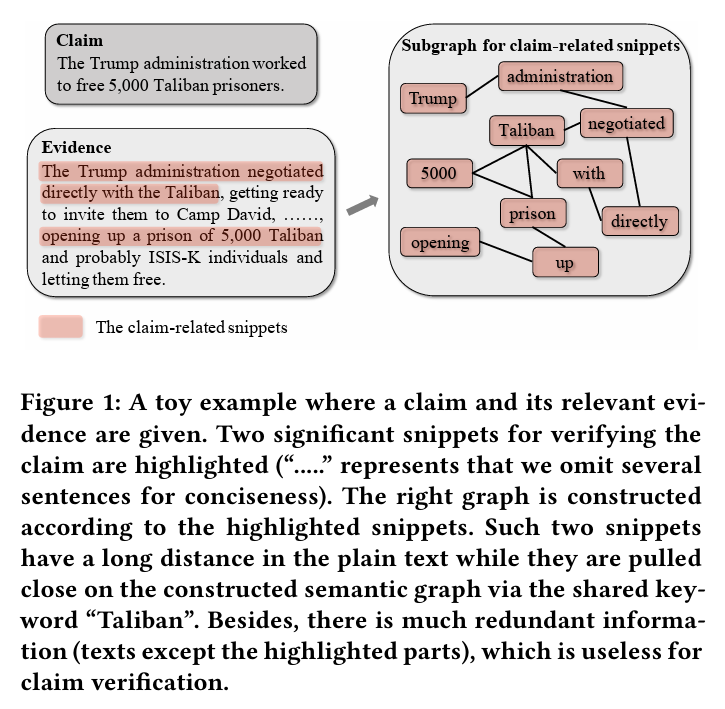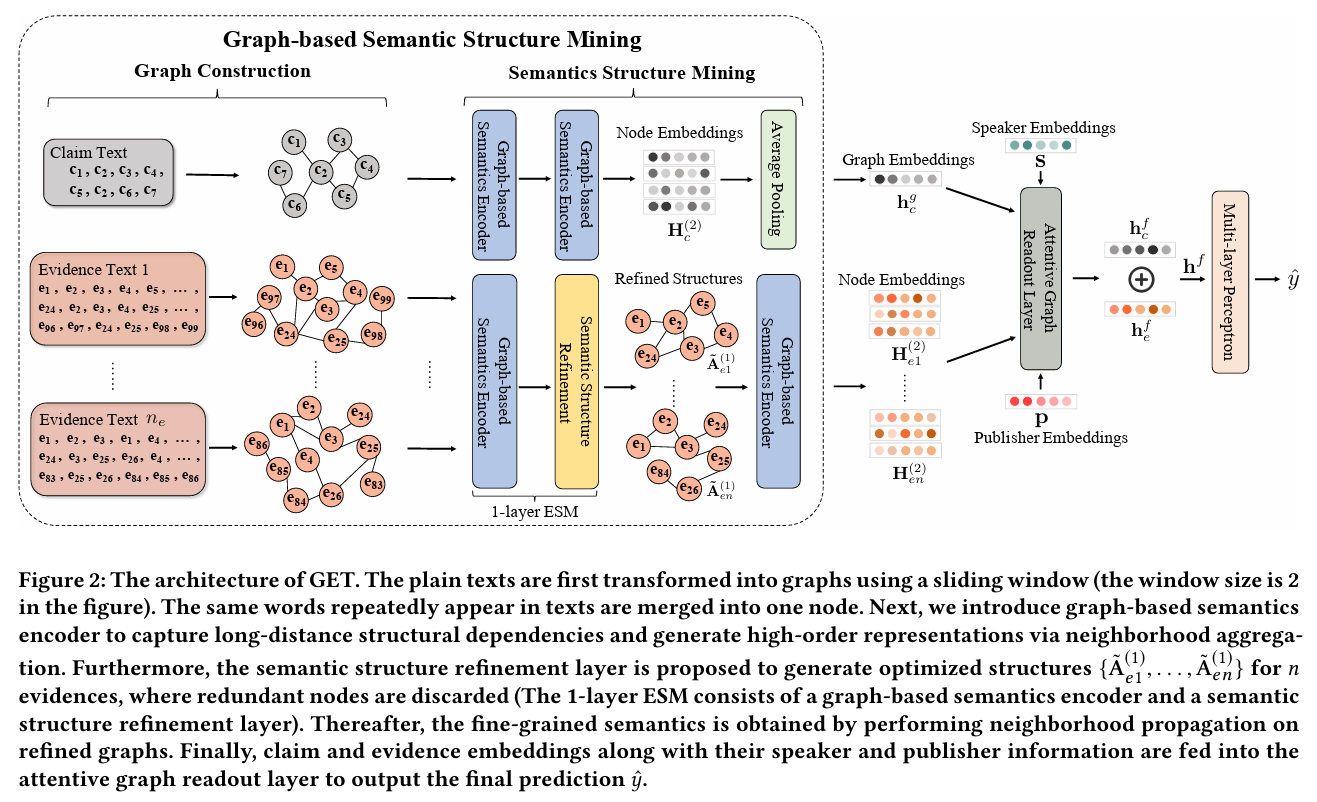Detecting Fake News using Graph Neural Networks and Evidence
 Darsh Patel
Darsh Patel
In the digital age, the proliferation of fake news has become a pervasive issue, challenging the integrity of information dissemination. The quest for automated fake news detection has led researchers to explore various methodologies, with evidence-based detection emerging as a promising approach. This blog delves into the intricacies of a novel framework, GET (Graph-based semantic structure mining), which leverages the power of Graph Neural Networks (GNNs) to enhance the accuracy of fake news detection.
The Challenge of Long-Distance Semantic Dependencies
Traditional sequential models, while effective, often struggle with integrating relevant information scattered across a text. This is particularly problematic in the context of fake news detection, where the veracity of a claim hinges on the intricate interplay of dispersed semantic cues. The GET framework addresses this by modeling claims and evidences as graph-structured data, enabling the capture of long-distance semantic dependencies through neighborhood propagation.
Reducing Redundancy in Evidence
Another hurdle in fake news detection is the abundance of redundant information within evidences, which can obfuscate the truth and mislead detection models. GET confronts this challenge head-on by incorporating a graph structure learning process that mitigates redundancy. By discarding unimportant nodes based on complex semantic structures, GET refines the semantic representations fed into the claim-evidence interaction module, thereby enhancing the prediction accuracy.

Two highlighted snippets are separated by plenty of words, which induces a long distance between them. Such snippets both contain important information for verifying the claim, i.e., the subject “The Trump administration” and the action “opening up a prison of 5,000 Taliban”. Therefore, fusing the information is indispensable and beneficial for claim veracity prediction. However, the long distance semantic dependency between such information is hard to be captured due to the inherent drawbacks of sequential models utilized in previous methods.
Dispersed claim-related snippets are pulled close on graphs, thus the useful information could be better fused via neighborhood propagation
The GET Framework: A Closer Look
The GET framework is a unified, graph-based method designed specifically for evidence-based fake news detection. It consists of four key modules:
Graph Construction: Claims and evidences are transformed into graph structures, where nodes represent words, and edges denote co-occurrence, capturing local and long-distance contextual information.
Graph-based Semantics Encoder: Utilizing GNNs, GET encodes the semantics of the graphs, allowing nodes to adaptively balance self-features with neighborhood information.
Semantic Structure Refinement: This module refines the graph by learning an optimized structure, shedding redundant nodes and honing in on the most pertinent information.
Attentive Graph Readout Layer: Finally, the refined semantic structures, along with speaker and publisher embeddings, are processed through an attention mechanism to produce the final veracity prediction.
Empirical Validation and Future Directions
Comprehensive experiments have demonstrated the superiority of GET over state-of-the-art methods in fake news detection. By capturing fine-grained semantics and reducing redundancy, GET paves the way for more accurate and interpretable verdicts on news veracity.
The implications of GET extend beyond fake news detection, potentially benefiting other domains where long-distance semantic relationships and information redundancy pose significant challenges. As the framework continues to evolve, it holds the promise of revolutionizing the way we approach the detection of misinformation.
Conclusion
This is complete flow of the GET framework:

This blog post aims to provide a technical yet accessible overview of the GET framework and its role in combating fake news. By harnessing the capabilities of graph neural networks, researchers are making strides towards a future where the truth can be more effectively discerned from falsehoods in our increasingly interconnected world.
This article is completely based upon the paper I recently read:
Weizhi Xu, Junfei Wu, Qiang Liu, Shu Wu, and Liang Wang. 2022. Evidence-aware Fake News Detection with Graph Neural Networks. In Proceedings of the ACM Web Conference 2022 (WWW '22). Association for Computing Machinery, New York, NY, USA, 2501–2510. https://doi.org/10.1145/3485447.3512122
Subscribe to my newsletter
Read articles from Darsh Patel directly inside your inbox. Subscribe to the newsletter, and don't miss out.
Written by
